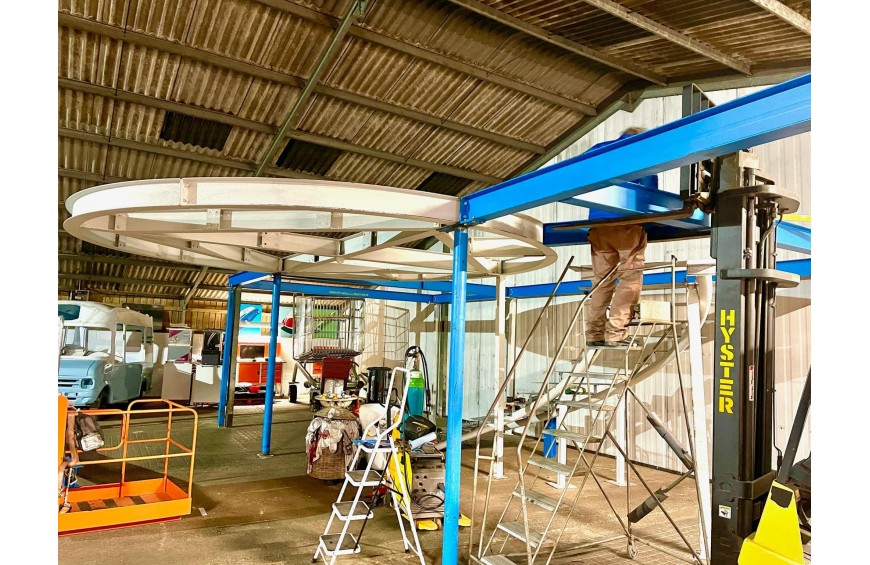Selecting the appropriate steel beam is a critical decision that can make or break the structural integrity of any construction project. Whether you're a professional contractor, an architect designing a complex structure, or a motivated DIY enthusiast, understanding the nuances of steel beam selection is essential for ensuring safety, durability, and optimal performance.
Understanding Steel Beam Basics
Steel beams are fundamental structural elements that support loads and transfer them effectively through a building's framework. They're designed to resist bending and provide critical support in various construction scenarios, from residential home extensions to large commercial buildings.
Types of Steel Beams
- I-Beams (W-Beams)
- Characterized by their distinctive I-shaped cross-section
- Excellent for bearing heavy vertical loads
- Commonly used in commercial and industrial construction
- Ideal for supporting long spans with minimal deflection
- H-Beams
- Similar to I-beams but with wider flanges
- Superior load-bearing capacity
- Best suited for heavy-duty structural applications
- Typically used in bridges, high-rise buildings, and large infrastructure projects
- Channel Beams
- C-shaped cross-section
- Lighter weight compared to I and H-beams
- Perfect for lighter load requirements
- Often used in secondary structural elements and framing
- Angle Beams
- L-shaped cross-section
- Excellent for creating connections and supporting smaller loads
- Versatile in both residential and commercial applications
- Used for bracing, framing, and structural reinforcement
Key Factors in Beam Selection
1. Load-Bearing Requirements The primary consideration in selecting a steel beam is understanding the total load it must support. This includes:
- Dead load (permanent weight of the structure)
- Live load (temporary weight from occupants, furniture, equipment)
- Environmental loads (wind, snow, seismic activity)
Professional engineers typically calculate these loads using precise mathematical models to determine the exact beam specifications needed.
2. Span Length The distance between support points dramatically influences beam selection:
- Longer spans require deeper, more robust beams
- Shorter spans allow for lighter, more economical beam choices
- Deflection calculations are crucial to prevent sagging or structural compromise
3. Material Grade and Strength Steel beams are classified by their material strength, typically measured in yield strength:
- A36 Steel: Standard grade, yield strength of 36,000 psi
- A572 Steel: Higher strength, yield strengths ranging from 42,000 to 65,000 psi
- A992 Steel: Most common for structural applications, consistent quality and performance
4. Beam Sizing Considerations Beam dimensions are critical and depend on multiple factors:
- Width of flanges
- Depth of the beam
- Web thickness
- Overall cross-sectional area
Standard sizing charts and computational tools help engineers determine precise beam dimensions for specific load requirements.
5. Corrosion Resistance Different environments demand different levels of corrosion protection:
- Galvanized steel for moderate exposure
- Specially coated beams for marine or chemically aggressive environments
- Stainless steel options for extreme conditions
Practical Selection Process
Step 1: Professional Assessment While this guide provides comprehensive information, always consult a structural engineer for complex projects. They'll perform detailed load calculations and recommend specific beam types.
Step 2: Project-Specific Analysis Consider these project-specific variables:
- Building type (residential, commercial, industrial)
- Local building codes and regulations
- Climate and environmental conditions
- Budget constraints
- Long-term structural performance expectations
Step 3: Cost-Effectiveness Balance initial costs with long-term performance:
- Cheaper beams might require more maintenance
- Higher-grade steel often provides better long-term value
- Factor in installation complexity and potential future modifications
Common Mistakes to Avoid
- Underestimating Load Requirements
- Always err on the side of over-engineering
- Include safety margins in your calculations
- Consider potential future load increases
- Ignoring Environmental Factors
- Local climate impacts beam performance
- Consider thermal expansion and contraction
- Account for potential corrosive environments
- Overlooking Connection Details
- Beam strength depends on proper connections
- Use appropriate welding or bolting techniques
- Ensure connections match beam specifications
Cost Considerations
Steel beam prices vary widely:
- Basic I-beams: £50-£200 per meter
- Specialized high-strength beams: £200-£500 per meter
- Custom or complex beam configurations: £500+ per meter
Prices fluctuate based on:
- Current steel market conditions
- Beam complexity
- Material grade
- Quantity purchased
Emerging Technologies
The steel beam industry continues evolving:
- Computer-aided design (CAD) for precise customization
- Advanced computational modeling
- Lightweight, high-strength alloy developments
- Sustainable manufacturing processes
Conclusion
Selecting the right steel beam requires a nuanced understanding of structural engineering principles, project-specific requirements, and careful analysis. While this guide provides comprehensive insights, professional consultation remains paramount for critical structural decisions.
By considering load requirements, span lengths, material grades, and environmental factors, you'll make informed choices that ensure structural integrity, safety, and long-term performance.
Pro Tip: Always prioritize quality and professional guidance over cost-cutting measures when selecting structural steel beams.



Submit comment Cancel Reply